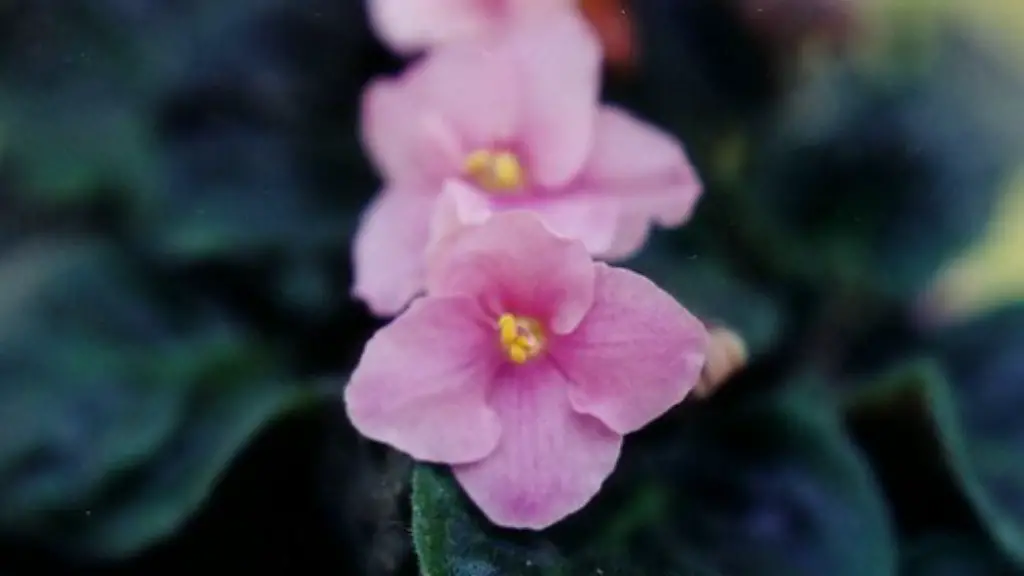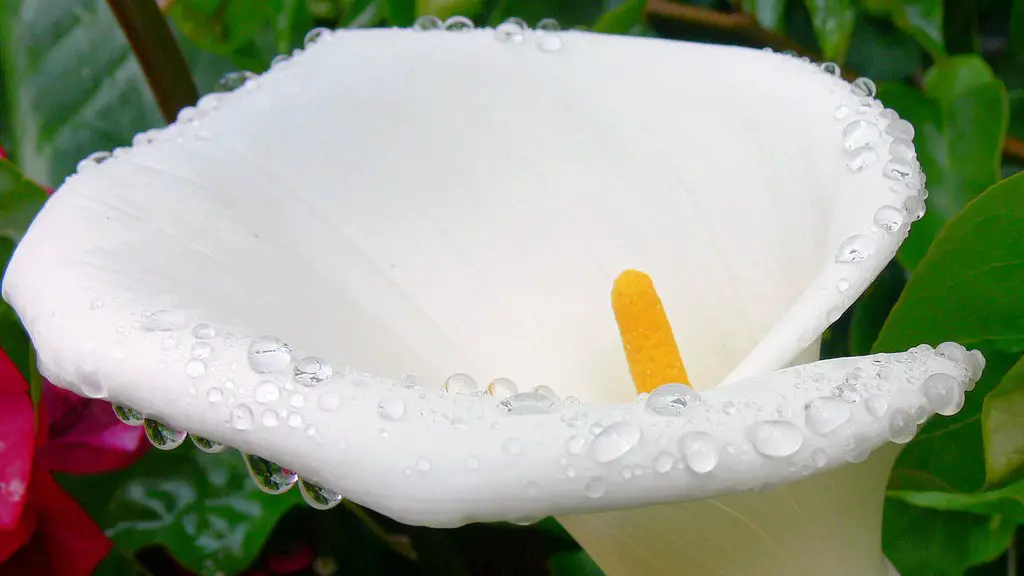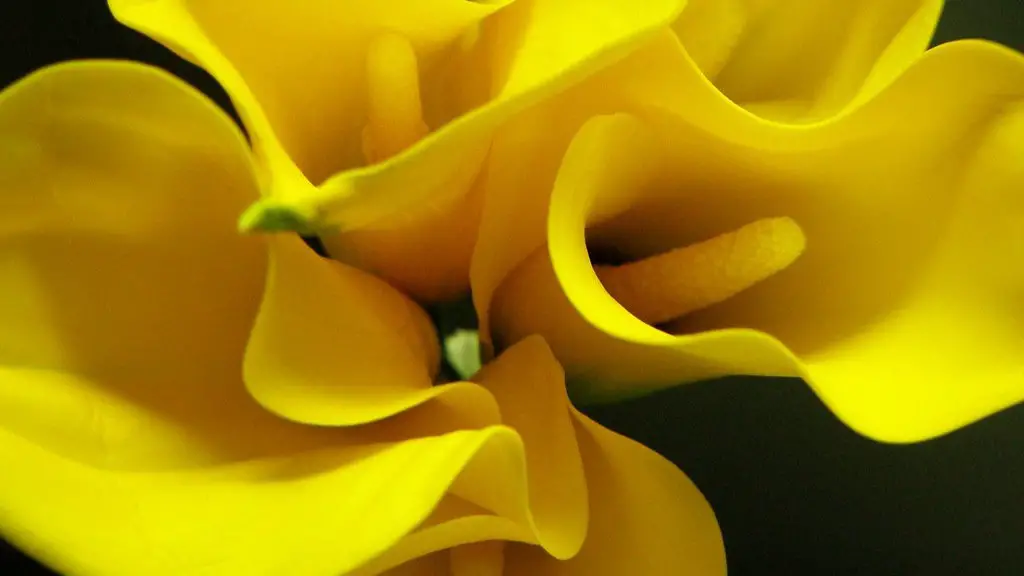African violets are a type of flower that is known to bloom all year round. They are native to Africa and can be found in a variety of colors. The most common color of African violet is blue, but they can also be found in purple, pink, and white. To make African violets bloom, you will need to provide them with the proper sunlight and watering.
There are a few things you can do to encourage your African violets to bloom:
1. Make sure they are receiving the right amount of light. They do best in bright, indirect light.
2. Keep them warm. African violets like temperatures between 70 and 80 degrees Fahrenheit.
3. Water them regularly. Allow the soil to dry out slightly between waterings.
4. Fertilize them monthly with aAfrican violet fertilizer.
5. Deadhead spent blooms.
How do you force an African violet to bloom?
If your African violet is not blooming, it is likely because it is not getting enough light. African violets need indirect sunlight; direct sunlight can burn the leaves. Choose a north- or east- facing window for best results. Keep plants away from cold glass and rotate the pot once a week so all leaves receive light.
If you want your African violet to bloom continuously, you need to provide it with the right growing conditions. African violets need bright, indirect light and a warm, humid environment. They also need to be watered regularly and fertilized every month or so. With the right care, you can expect your African violet to bloom several times a year.
How often does an African violet bloom
African violets are known for their ability to bloom nearly year-round. If you are able to provide the correct conditions, expect your African violets to bloom 10-12 months each year. Each bloom lasts for about 2-3 weeks.
Epsom salts provide plants with essential magnesium and sulfur – two minerals needed to produce beautiful blooms and healthy foliage. Mix one and a half teaspoons of Epsom salts in a quart of tepid water and swirl to dissolve. Water your African violets (below the leaves) with this solution once a month.
Can you use Miracle Grow on African violets?
African violets are beautiful flowers that add a touch of color to any room. They grow best in well-drained, slightly acidic soil. Miracle-Gro® Indoor Potting Mix is specially formulated to provide indoor plants like African violets with just the right growing environment.
African violets are best placed in a location that receives bright, indirect light. A site near an east or north window is often a good location. African violets should not be placed in direct sun. If a suitable window isn’t available, African violets can be placed under a fluorescent light fixture containing two 40-watt fluorescent tubes.
What causes African violets not to bloom?
If your African violet isn’t blooming well, it may be because it’s not getting enough light. African violets prefer bright, indirect sun, and too little sunlight can cause them to stretch for the light and produce few or no flowers. Too much sun can burn the leaves, so an east-facing window is ideal, especially with a sheer curtain to block the sun’s harshest rays.
Water your African violets only once a week, and allow the plant to completely dry out between waterings. One way to make sure you don’t overwater your plants is to set up a wicking system.
Should African violets be watered from the top or bottom
It is best to water African violets from the bottom. This allows the roots to absorb the water more effectively and prevents the leaves from getting wet and developing leaf spots. However, either top or bottom watering is fine, as long as you use lukewarm or warm water (not cold water).
Coffee grounds are slightly acidic and contain nitrogen, which helps plants grow healthy foliage. Occasionally sprinkling used coffee grounds on top of your African violet potting soil can be good for the plant.
What is the best African violet fertilizer for blooming?
African violets are a type of plant that is known to be relatively easy to care for. Many growers have the best success fertilizing African violets once a week with a mild fertilizer that is designed specifically for this type of plant. A balanced fertilizer formula, such as a 20-20-20 or a 15-20-15, will usually work well in most growing situations.
February is the month to grow violets! With interesting leaves and attractive flowers, they will start flowering as early as January. So, whether you grow violets or ones of their close cousins, February is the month to do it.
Is baking soda good for African violets
If powdery mildew on African violets is not responding to treatment, try spraying the plants lightly with a baking soda and water mixture. You can also spray the air around the plant with Lysol or another household disinfectant. Be careful not to get too much spray on the leaves.
If you have overwatered your African Violet plant, the soil will retain too much water. This retention of water will cause the leaves and/or leaf stems to turn soft, limp or mushy.
What is the secret to growing African violets?
African violets are best kept in an environment with 10 or more hours of bright, filtered light. They should never be placed in direct sunlight as this will scorch the leaves. The soil should be kept moist but well drained; too much water will lead to root rot.
Hydrogen peroxide is often used as a natural way to prevent algae growth in ponds and other water sources. To use it for this purpose, add one tablespoon of 3% hydrogen peroxide to a gallon of fertilized water. The plant may not soak up the water immediately, but eventually the water will be taken in and the algae should be prevented from growing.
Conclusion
There are a few things you can do to encourage your African violets to bloom:
1. Give them bright, indirect light. They will bloom best if they get 12-14 hours of light each day.
2. Keep the soil moist, but not soggy. Allow the top of the soil to dry out slightly between waterings.
3. Feed them regularly with a African violet fertilizer.
4. Pinch off the dead flowers and any leggy stems to encourage new growth.
If you want to make your African violets bloom, you can do so by following a few simple steps. First, make sure that you are giving them the right amount of light. They need bright, indirect light in order to bloom. Second, make sure that you are giving them the right amount of water. They like to be kept evenly moist, but not too wet. Third, make sure that you are fertilizing them regularly. African violets need to be fertilized about every two weeks in order to bloom. By following these simple steps, you can enjoy beautiful blooms from your African violets.





